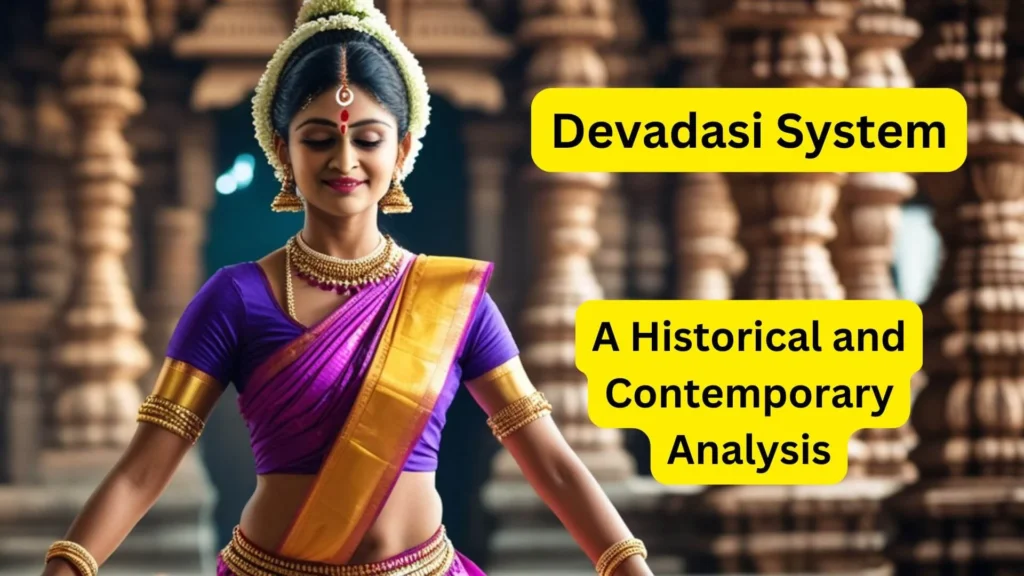
Introduction
The Devadasi system is an ancient socio-religious tradition in India, where young girls were dedicated to the service of temples, serving as dancers and caretakers of deities. Rooted in the Sanskrit terms “Deva” (God) and “Dasi” (female servant), Devadasis were considered spiritual consorts of the deity they served. This system, which flourished predominantly in South India, was historically associated with the performance of classical dances like Bharatanatyam, and it played a vital role in preserving and perpetuating India’s rich cultural heritage. The practice dates back to at least the 6th century CE, peaking during the Chola, Chera, and Pandya dynasties.
While initially a position of high esteem, this system gradually declined due to various socio-political changes, including the arrival of colonial powers and the diminishing patronage of temples. By the 19th and 20th centuries, what once was a revered institution transformed into a practice fraught with exploitation and social stigma, often linking Devadasis to prostitution.
Historical Background
Origins of the Tradition in Ancient India
This tradition has its roots in India’s ancient socio-religious customs, which are thought to have originated as early as the 6th century CE during the reigns of powerful South Indian dynasties such as the Cholas, Cheras, and Pandyas. The term “Devadasi” derives from the Sanskrit words “Deva” (God) and “Dasi” (female servant), signifying women who were “married” to a deity and dedicated their lives to temple service. Initially, this tradition was a highly respected one, deeply entwined with the spiritual and cultural fabric of society.
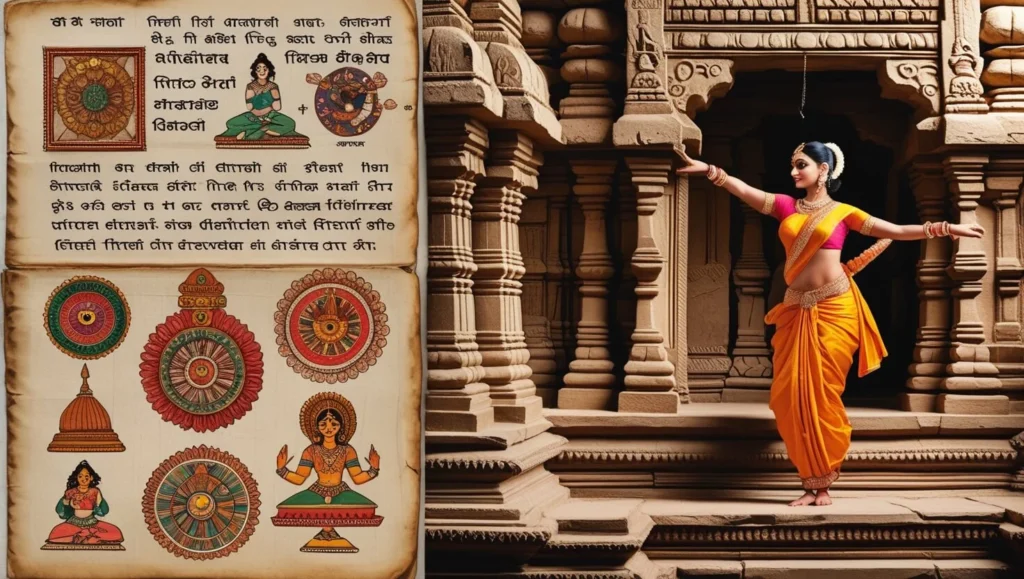
Historical records and inscriptions suggest that Devadasis were often chosen from a young age, sometimes by their families, to be consecrated to temple deities. This dedication was considered a sacred duty, ensuring that the Devadasis were seen as intermediaries between the divine and the human. Their service was believed to bring prosperity and spiritual merit to their families and the community.
Role and Significance of Devadasis in Temple Rituals and Society
They held a prestigious position in temple rituals and society. They were entrusted with the performance of various ceremonial duties, including singing, dancing, and playing musical instruments during religious festivals and daily temple rituals. These performances were not merely entertainment but were viewed as offerings to the deity, aiming to please and honor the gods.
Classical dance forms like Bharatanatyam, Mohiniyattam, Kuchipudi, and Odissi have their origins linked to the Devadasis, who were the custodians of these art forms. Through their dance and music, Devadasis conveyed mythological stories and devotional themes, thereby acting as preservers and propagators of India’s rich cultural heritage.
Beyond their artistic contributions, they played a critical role in educating society, particularly in the arts and literature. They were well-versed in religious texts, music, and dance, and were often consulted on matters related to temple administration and religious practices. Their influence extended to the social sphere, where they enjoyed privileges such as land grants and financial endowments from kings and patrons, underscoring their esteemed status.
Geographical Prevalence and Variations Across Regions
The system was predominantly practiced in South India, particularly in the states of Tamil Nadu, Karnataka, Andhra Pradesh, and Odisha. Each region had its unique adaptation of the tradition, influenced by local customs and the specific deities worshiped.
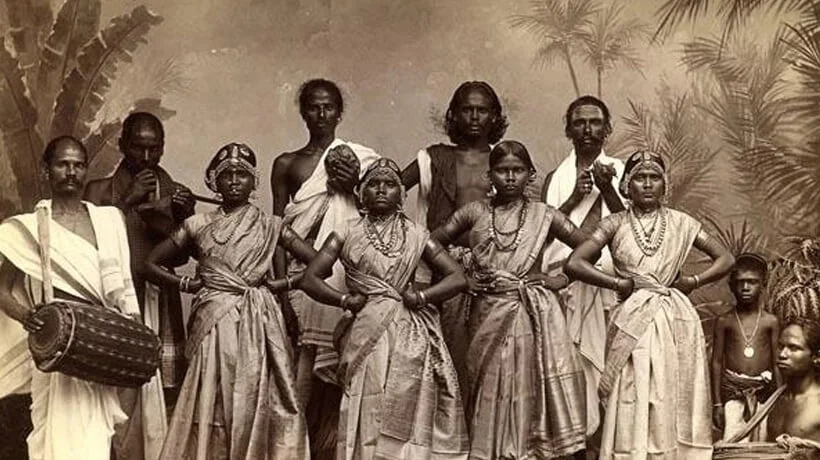
- In Tamil Nadu, they were associated with temples dedicated to Lord Shiva and Vishnu, playing a central role in the grand temple festivals.
- In Karnataka, they served at temples of Goddess Yellamma, where the tradition persisted longer than in other regions.
- Odisha’s Devadasis, known as Maharis, were connected with the Jagannath Temple in Puri, where they performed the ritual dances that are considered precursors to Odissi dance.
- In Andhra Pradesh, they were linked to temples of both male and female deities, reflecting a broader range of devotional practices.
Despite these regional variations, the common thread was the Devadasis’ dedication to temple service and their integral role in the spiritual and cultural life of the community.
The historical background of the tradition reveals a complex tapestry of religious devotion, cultural artistry, and social standing. Originating as a revered practice, they were pivotal in maintaining and transmitting classical arts and religious rituals. However, the practice evolved differently across regions, adapting to local customs while remaining central to temple worship. This rich history underscores the importance of understanding the system within its original context before examining its subsequent decline and transformation.
Cultural and Religious Significance
Association with Classical Dance Forms and Music
The tradition is intricately linked to the development and preservation of classical Indian dance and music. In ancient India, Devadasis were not only custodians of temple rituals but also accomplished artists who played a pivotal role in nurturing and sustaining performing arts. Their daily duties included the performance of ritualistic dances and music within temple premises, which were considered offerings to the deities.
Among the most prominent dance forms associated with the Devadasis is Bharatanatyam, which traces its origins to Tamil Nadu and was historically performed exclusively by Devadasis in temples. Similarly, in Odisha, Odissi dance evolved through the performances of the Maharis (a regional name for Devadasis), while in Kerala, Mohiniyattam was practiced as a temple dance by Devadasis dedicated to Lord Vishnu. Each of these dance forms embodies spiritual narratives and devotional expressions, often dramatizing stories from Hindu scriptures like the Ramayana, Mahabharata, and Puranas.
They were also proficient in classical music, often accompanying their dance with vocal or instrumental music. This intertwining of dance and music was not just an art form, but a sacred ritual aimed at invoking divine blessings and connecting the earthly realm with the spiritual.
Devadasis as Preservers of Cultural Heritage
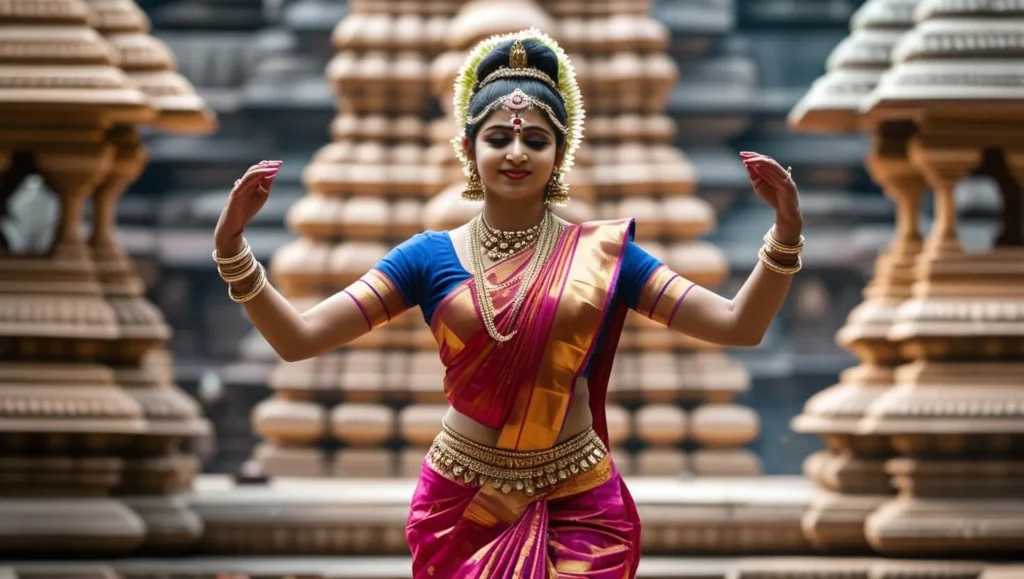
They were guardians of India’s rich cultural heritage, serving as both artists and educators. Their deep knowledge of dance, music, literature, and religious texts made them vital in preserving the intangible cultural heritage of their times. Unlike the temple priests who focused on rituals and religious ceremonies, they used their artistic expressions to interpret and convey religious themes to the masses, thereby making spiritual teachings accessible and relatable.
Through their performances, Devadasis ensured that oral traditions and mythological stories were passed down generations, thus maintaining the continuity of cultural practices. Their art forms, often a blend of spiritual devotion and cultural expression, kept alive the intricate techniques and traditions of classical Indian dance and music, which might have otherwise been lost.
Spiritual Roles and the Concept of Being “Married” to the Deity
Central to this tradition was the spiritual concept of being “married” to a deity. This sacred marriage symbolized a lifelong dedication to temple service, with the Devadasis considered earthly spouses of the divine. This union was more than symbolic; it established the Devadasi as a consecrated individual, whose primary purpose was to serve the deity through dance, music, and temple duties.
This concept of divine marriage also reflected in the rituals and customs observed by the Devadasis, paralleling the societal role of a married woman but with a spiritual dimension. The dedication ceremony, often performed when the girl was young, marked her initiation into the service of the deity and was akin to a sacred bond that transcended human relationships.
The role of the Devadasis extended beyond mere temple rituals; they were believed to act as mediators between the divine and the mortal world, their performances seen as prayers in motion. This unique spiritual status granted them a place of honor within the religious hierarchy, positioning them as integral to the spiritual life of the community.
The cultural and religious significance of this system lies in its profound contribution to the preservation of classical arts and spiritual traditions. As performers, educators, and spiritual mediators, they played a crucial role in keeping alive the artistic and devotional practices that form the bedrock of India’s cultural heritage. Their association with classical dance and music not only enriched the cultural landscape but also underscored their unique position as guardians of spiritual and cultural continuity.
Socio-Economic Dimensions of the Devadasi System
Social Status and Patronage Received by Devadasis
In its early stages, this system was a prestigious institution, and they held a revered social status within their communities. As servants of the divine, they were considered auspicious figures, often accorded a higher social position than ordinary women. This status was reinforced by the patronage they received from kings, nobles, and wealthy patrons, who viewed the support of temple institutions and Devadasis as a spiritual duty and a means of earning religious merit.

Royal families and local elites provided substantial patronage to them in the form of financial support, land grants, and gifts, ensuring the sustenance of both the Devadasis and the temple economy. This patronage also extended to the arts and education, with Devadasis often receiving training in classical dance, music, and literature, further elevating their status as cultural custodians.
Despite their revered position, the perception of Devadasis began to shift over time, especially during the later medieval period. As socio-political changes occurred, the decline in royal patronage and the rise of colonial influences led to a gradual erosion of the Devadasis’ elevated status, eventually reducing them to marginalized figures in society.
Economic Aspects: Land Grants, Donations, and Livelihoods
The economic framework of this system was initially robust, with Devadasis benefiting from land grants, donations, and endowments provided by both the temple and its patrons. These grants, often inscribed on temple walls or copper plates, provided a stable source of income, enabling them to maintain a dignified standard of living.
In addition to land, they received regular donations in the form of money, jewelry, and other valuables during religious ceremonies and festivals. These contributions not only supported their livelihood but also ensured the maintenance of temple activities and the artistic traditions associated with their service.
However, the economic security of Devadasis was highly contingent on the temple’s wealth and the continued support of their patrons. With the decline of temple patronage, especially during the British colonial period, many of them were left without financial support, forcing them to seek alternative means of livelihood. This economic downturn led to a deterioration in their living conditions, contributing to the eventual stigmatization of the Devadasi tradition.
Impact on Families and Communities Involved in the System
This system had a profound impact not only on the women themselves but also on their families and communities. In many cases, families saw the dedication of a daughter as a sacrificial offering that would bring blessings and prosperity to the household. The association with temple service often ensured that the family received social recognition and material benefits, reinforcing their commitment to the tradition.
Communities around temples also benefited from the presence of Devadasis, as their performances and rituals attracted pilgrims and patrons, stimulating local economies. The system created a micro-economy where artisans, musicians, and temple workers thrived alongside them, all contributing to the vibrant cultural and religious life of the region.
However, the eventual decline of the Devadasi tradition had adverse socio-economic effects on these families and communities. As the socio-religious support system eroded, many families faced economic hardship and social ostracism. The loss of temple patronage meant that entire communities that once revolved around temple services and rituals were pushed into poverty, leading to the marginalization of Devadasi families within the broader societal framework.
The socio-economic dimensions of this system highlight its complex interplay between social status, economic sustenance, and community impact. While initially a system of reverence and patronage that provided economic stability and cultural prominence, the decline in royal and societal support eventually led to the economic downfall and social marginalization of Devadasis and their families. Understanding these socio-economic aspects offers critical insights into the historical transformation of the Devadasi system and its long-term implications on Indian society.
Decline and Transformation of the Devadasi System
Factors Leading to the Decline
This system, once a revered institution, began to decline due to a confluence of colonial interventions, socio-political changes, and the erosion of traditional patronage.
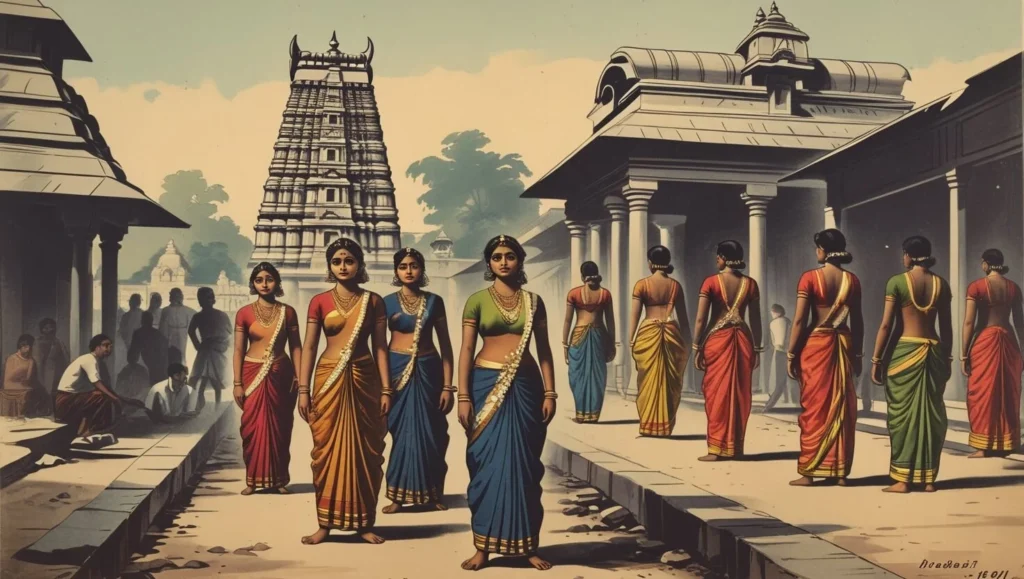
- Colonial Interventions: The advent of British colonial rule in India brought with it a wave of cultural and administrative changes that disrupted traditional institutions, including this system. British colonial authorities, driven by their Victorian moral framework, viewed this tradition through a lens of moralistic judgment, often branding it as a form of social evil akin to prostitution. Legislative measures, such as the Madras Devadasis (Prevention of Dedication) Act of 1947, were enacted to abolish the system, thereby dismantling the institutional framework that supported Devadasis.
- Socio-Political Changes: The decline of regional kingdoms and the centralization of power under colonial rule led to the dismantling of temple economies, which had traditionally supported the Devadasis. The decline of royal patronage, which had been a primary source of sustenance for Devadasis, left them without their traditional means of livelihood. The shift towards a secular, modern state further marginalized religious practices and the communities that thrived around them, including them.
- Loss of Patronage: As temple rituals became less central to societal life, and as the aristocracy and elite classes distanced themselves from traditional practices, the financial and social support that had sustained Devadasis began to wane. This loss of economic and social patronage forced many Devadasis into poverty and social isolation, marking a significant departure from their earlier status as esteemed temple servants and artists.
Transition from Revered Artists to Marginalized Groups
With the decline of their traditional roles, Devadasis underwent a dramatic social transformation. From being respected artists and spiritual figures, they gradually became marginalized groups within society. This transition was not merely a result of economic deprivation but also of social stigma that began to associate the Devadasi system with immorality and degradation.
The breakdown of the temple-centric socio-economic structure left Devadasis without a clear societal role, which in turn led to their stigmatization. Without the protective framework of temple rituals and the patronage of the elite, Devadasis were often ostracized by mainstream society. This isolation exacerbated their marginalization, transforming them from cultural custodians into social outcasts.
Emergence of Exploitation and Association with Prostitution
One of the most tragic aspects of the Devadasi system’s decline was its association with exploitation and prostitution. As they lost their traditional support structures, many were exploited by local power brokers, and the system began to take on exploitative characteristics.
The loss of religious and societal backing meant that they were vulnerable to economic pressures, and in many cases, coercion into sex work became a means of survival. Over time, the once-sacred institution became increasingly associated with prostitution, tarnishing the original spiritual and cultural significance of the Devadasi tradition.
This association with prostitution further deepened the social stigma surrounding Devadasis, making it challenging for them to escape the cycle of exploitation. Efforts to reform the system in the late 19th and early 20th centuries, although well-intentioned, often did little to rehabilitate Devadasis or to address the root causes of their exploitation, focusing instead on abolishing the practice without providing viable alternatives for the women involved.
The decline and transformation of this system are emblematic of the complex socio-economic and cultural shifts that occurred during colonial and post-colonial periods in India. From being revered artists and spiritual figures, Devadasis were reduced to marginalized and stigmatized groups due to the loss of patronage, colonial moral policing, and socio-political changes. The tragic association with exploitation and prostitution further underscores the need to understand the historical context and the socio-economic forces that led to the downfall of a once-revered tradition.
Legal Interventions and Abolition Efforts
Legislative Measures Taken to Abolish the Devadasi System
The decline of this system prompted a series of legal interventions aimed at abolishing the practice, reflecting the growing awareness and condemnation of the system’s exploitative aspects. The initial legislative steps to curb the system were largely driven by the British colonial government and later by the Indian state post-independence.
- The Madras Devadasis (Prevention of Dedication) Act, 1947: One of the first significant legal interventions, this Act was passed in the Madras Presidency. It sought to outlaw the dedication of women to temples, making such practices illegal and subject to criminal penalties. This legislation marked a pivotal step in criminalizing the system, though it faced considerable resistance from communities that still adhered to the tradition.
- The Bombay Devadasi Protection Act, 1934: Another notable legislative effort during the pre-independence period was the enactment of this law in Bombay Presidency, which aimed to protect Devadasis from exploitation and to rehabilitate those trapped in the system. It sought to provide Devadasis with alternatives to temple service and to curb the social ills associated with the practice.
- The Karnataka Devadasi (Prohibition of Dedication) Act, 1982: After India’s independence, several states continued to confront the challenges posed by the remnants of this system. This Act in Karnataka was a comprehensive effort to prevent the dedication of girls as Devadasis and to offer rehabilitative measures. It also penalized those who facilitated or encouraged such dedications.
- The Andhra Pradesh Devadasi (Prohibition of Dedication) Act, 1988: Similarly, Andhra Pradesh enacted laws to criminalize the dedication of women to temples, reflecting the ongoing struggle to eradicate the practice even decades after independence. The legislation also provided frameworks for the rehabilitation of Devadasis and awareness campaigns to educate communities about the legal implications of continuing the practice.
Role of Social Reformers and Activists in Advocating for Change
The legal battle against the Devadasi system was significantly bolstered by the tireless efforts of social reformers and activists who campaigned against the practice, bringing attention to its exploitative nature and the injustice faced by the women involved.

- Karmaveer Bhaurao Patil: A prominent social reformer from Maharashtra, Patil was instrumental in advocating for the abolition of the Devadasi system. He actively campaigned to raise awareness about the plight of Devadasis and worked towards their education and rehabilitation.
- Muthulakshmi Reddy: One of the most notable figures in the movement against the Devadasi system, Reddy, a medical doctor and social reformer, played a critical role in the passage of the Madras Devadasis (Prevention of Dedication) Act. Her efforts highlighted the health and social issues faced by them, advocating for their social integration and economic independence.
- B. R. Ambedkar: Although primarily known for his work on the caste system and Dalit rights, Ambedkar also spoke against the Devadasi system as part of his broader fight against social inequalities. His advocacy for social reform included efforts to uplift the marginalized communities, including them, by challenging the socio-religious structures that perpetuated their exploitation.
- Organizations and Movements: Several women’s rights organizations and NGOs have played a crucial role in advocating for the abolition of the Devadasi system. These groups have worked on ground-level interventions, providing legal aid, vocational training, and healthcare services to former Devadasis, aiding in their transition to mainstream society.
Challenges Faced in Implementing and Enforcing Laws
Despite the enactment of various laws to abolish the Devadasi system, the implementation and enforcement of these laws have faced numerous challenges:
- Deep-Rooted Cultural Beliefs: The Devadasi system was intertwined with deeply entrenched religious and cultural practices. Many communities continued to view the system as a sacred tradition, making it difficult to enforce the prohibitions effectively. This cultural resistance often led to covert continuance of the practice despite legal bans.
- Socio-Economic Factors: Many families, especially those from economically disadvantaged backgrounds, continued to dedicate their daughters to temples as a means of economic survival. The lack of alternative livelihood opportunities and social safety nets made it challenging to dissuade families from engaging in the practice.
- Inadequate Rehabilitation Measures: Although laws were put in place to prohibit the system, adequate rehabilitation programs for former Devadasis were often lacking. Many women found themselves ostracized and without means to support themselves, making it difficult for them to transition away from their traditional roles.
- Corruption and Local Enforcement Issues: In many cases, local law enforcement agencies were either complicit in the continuation of the practice or lacked the will to enforce the laws strictly. Corruption, combined with the influence of local power brokers, undermined the effectiveness of legal interventions.
- Lack of Awareness: In many regions, especially rural areas, there was a lack of awareness about the legal implications of continuing the Devadasi practice. Educational campaigns were insufficient to reach all segments of the population, allowing the practice to persist under different guises.
The journey towards the abolition of the Devadasi system is a testament to the complex interplay between legal measures, social reform efforts, and the persistent socio-cultural challenges. While significant progress has been made through legislative interventions and the advocacy of reformers, the implementation of laws and the rehabilitation of affected women remain critical challenges. Addressing these issues requires a holistic approach that combines legal enforcement, social awareness, and economic empowerment to ensure the complete eradication of this exploitative practice.
Contemporary Status of the Devadasi System
The system, once a revered tradition, has undergone significant transformations over the centuries. However, despite legal prohibitions and social reform efforts, remnants of the practice continue to exist in certain regions of India, primarily in Karnataka, Andhra Pradesh, Maharashtra, and Odisha. The contemporary status of the Devadasi system presents a complex picture of ongoing challenges and empowering success stories.
Current Prevalence of the Practice in Certain Regions
Although the Devadasi system has been officially outlawed, it persists clandestinely in some rural areas, often under different guises.
- Karnataka and Andhra Pradesh: Reports indicate that the practice still exists in villages and small towns, particularly in districts with historical links to the system. In many cases, the dedication of young girls as Devadasis happens under the pretext of religious ceremonies, with community pressure playing a significant role.
- Maharashtra and Odisha: In these states, the system’s prevalence has diminished significantly, but pockets of adherence still exist. Often, these are economically backward regions where the lack of education and economic opportunities perpetuates the system.
- Tamil Nadu and Kerala: Although less common, the system’s legacy lingers in some areas, often linked to traditional temple festivals and rituals, where families see no alternative to continuing the practice due to social constraints.
Ongoing Issues
- Stigma and Social Exclusion: Former Devadasis often face widespread stigma and social ostracism. Despite leaving the system, many find it difficult to integrate into mainstream society, facing prejudice due to their past. The caste dynamics, which were historically interwoven with the system, further marginalize these women.
- Socio-Economic Hardships: Many former Devadasis live in poverty, struggling to make ends meet. Without adequate education or vocational training, they find it challenging to secure sustainable livelihoods. This economic insecurity often traps their families in cycles of poverty, perpetuating multi-generational struggles.
- Rehabilitation Challenges: While several government schemes and NGO initiatives aim to rehabilitate former Devadasis, the effectiveness of these programs is often hindered by bureaucratic inefficiencies and lack of resources. The delay in delivering support services and inadequate infrastructure further complicates the rehabilitation process.
Success Stories and Initiatives Aimed at Empowering Former Devadasis
Despite these challenges, there are numerous inspiring success stories of former Devadasis who have overcome their circumstances to lead empowered lives. Various government and non-governmental organizations have also played pivotal roles in rehabilitating and empowering these women.
- Self-Help Groups (SHGs): In many regions, former Devadasis have formed self-help groups, engaging in small-scale businesses like handicrafts, tailoring, and agriculture. These groups provide a platform for collective empowerment and financial independence.
- Educational Initiatives: Several NGOs have focused on providing education and vocational training to former Devadasis and their children. Organizations like Mass Social Service Society (MASS) and Sangama in Karnataka have been instrumental in running schools, conducting workshops, and offering counseling to help these women reintegrate into society.
- Health and Legal Aid: Some organizations provide healthcare services and legal assistance to former Devadasis. Initiatives like awareness campaigns on sexual health and mental well-being, coupled with legal support to address exploitation, have been crucial in restoring dignity and self-confidence.
- Government Schemes: The Indian government, through various schemes like the Devadasi Rehabilitation Programme, offers financial aid, housing, and educational assistance. These schemes aim to provide a safety net for former Devadasis, helping them achieve self-sufficiency.
- Individual Success Stories: Many former Devadasis have become community leaders, activists, and advocates for change, using their experiences to educate others and prevent the perpetuation of the system. Their journeys from marginalization to empowerment serve as powerful testimonies to resilience and determination.
The contemporary status of the Devadasi system is a paradox of persistence and progress. While the practice still exists in certain pockets, the combined efforts of social reformers, activists, and government initiatives have led to significant strides in empowering former Devadasis. However, the battle is far from over, as ongoing issues like stigma, economic hardship, and implementation challenges continue to impede full rehabilitation. To eradicate the remnants of this practice, a multi-pronged approach involving education, economic empowerment, and social awareness is essential. Through these concerted efforts, we can hope to transform the lives of former Devadasis, offering them a future of dignity, opportunity, and equality.
Conclusion
The Devadasi system has undergone a dramatic evolution, transitioning from a revered cultural and religious institution to a practice associated with exploitation and marginalization. This transformation highlights the complex interplay between tradition, colonial intervention, social reform, and modern legal frameworks. Reflecting on this journey provides valuable insights into how societies grapple with the need to preserve cultural heritage while ensuring the protection of human rights.
Originating as a system of dedicated female artists who served in temples, the Devadasi tradition was initially a respected institution, integral to religious rituals and cultural preservation. However, colonial policies, loss of temple patronage, and socio-political changes led to the system’s decline, pushing many Devadasis into poverty and exploitation. This evolution underscores the necessity of contextual understanding when addressing traditional practices, balancing respect for heritage with social justice.
The legacy of the Devadasi system is intricately linked to India’s classical art forms, particularly dance and music, which owe much to the Devadasis’ contributions. Preserving this cultural heritage is crucial, but it must not come at the cost of human dignity. Efforts to sustain the artistic and cultural dimensions of the tradition should be accompanied by rigorous human rights protections. Ensuring that individuals are not exploited under the guise of tradition is imperative in maintaining ethical integrity in cultural preservation.
The path to rehabilitation for former Devadasis involves multi-faceted efforts that encompass economic empowerment, education, healthcare, and legal support. Continued advocacy and grassroots initiatives are essential to bridge the gap between policy and practice, ensuring that the legal abolishment of the system translates into real-world change. Society must also work towards destigmatizing former Devadasis, facilitating their reintegration and empowerment. A collective commitment to human rights, social justice, and cultural sensitivity can foster a society that honors its heritage while upholding the dignity of every individual.
